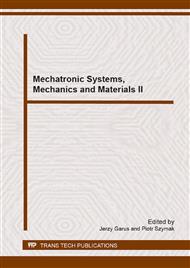p.265
p.273
p.280
p.287
p.294
p.301
p.309
p.320
p.326
Thrust Allocation in Propulsion System of Underwater Robotic Vehicle via Linear Programming
Abstract:
This paper focuses on a problem of power distribution in a multi-thrusters propulsion system of an underwater robot. The presented thrust allocation methods are directed towards minimization of energy expenditures necessary to obtain required control. A power/thrust relation is mapped by a linear function. Such approach allows using linear programming (LP) techniques to finding an optimal thrust allocation for demanded propulsive forces and moments. The LP models of thrust distribution are regarded for unconstrained and constrained allocation control.
Info:
Periodical:
Pages:
326-332
Citation:
Online since:
October 2013
Authors:
Keywords:
Price:
Сopyright:
© 2014 Trans Tech Publications Ltd. All Rights Reserved
Share:
Citation:


